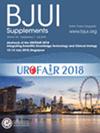Comparing open and video endoscopic lymphadenectomy for penile cancer: a systematic review and meta-analysis of prospective studies
Abstract
Objective
To conduct the first meta-analysis using only prospective studies to evaluate whether video endoscopic inguinal lymphadenectomy (VEIL) offers advantages in perioperative outcomes compared to open IL (OIL) in patients with penile cancer.
Methods
A systematic review with meta-analysis was conducted across multiple databases, including Cochrane Central Register of Controlled Trials (CENTRAL), the Medical Literature Analysis and Retrieval System Online (MEDLINE), Excerpta Medica dataBASE (EMBASE), Latin America and Caribbean Health Sciences Literature (LILACS), Scopus, Web of Science, and several trial registries up to June 2024. Only randomised controlled trials (RCTs) and prospective cohort studies were included. Data extraction focused on operative time, perioperative complications, drainage time, hospital stay, number of nodes retrieved and oncological outcomes.
Results
Four prospective studies, including three RCTs and one non-randomised study, were included in the analysis, totalling 95 patients and 174 operated limbs. VEIL demonstrated significantly fewer wound infections (P < 0.001; 95% confidence interval [CI] 0.01–0.18; I2 = 0), skin necrosis (P = 0.002; 95% CI 0.04–0.49; I2 = 0), and lymphoedema (P = 0.05; 95% CI 0.09–0.99; I2 = 27%) compared to OIL. The VEIL group also had a shorter drainage period (P = 0.001; mean difference [MD] –1.94, 95% CI −3.15 to −0.74) and hospital stay (P < 0.01; MD –5.48, 95% CI −6.34 to −4.62). Pain intensity and operative time were lower in the VEIL group, contributing to fewer postoperative complications overall. Oncological outcomes showed no significant differences between the groups.
Conclusion
The meta-analysis indicates that VEIL offers significant advantages over OIL in terms of reducing wound infections, skin necrosis, and lymphoedema, leading to shorter hospital stays and overall improved perioperative outcomes. However, the limited sample of 95 patients across four studies underscores the need for further randomised trials and a cautious interpretation of the results, which currently support the use of VEIL in managing patients with penile cancer.

 求助内容:
求助内容: 应助结果提醒方式:
应助结果提醒方式:


